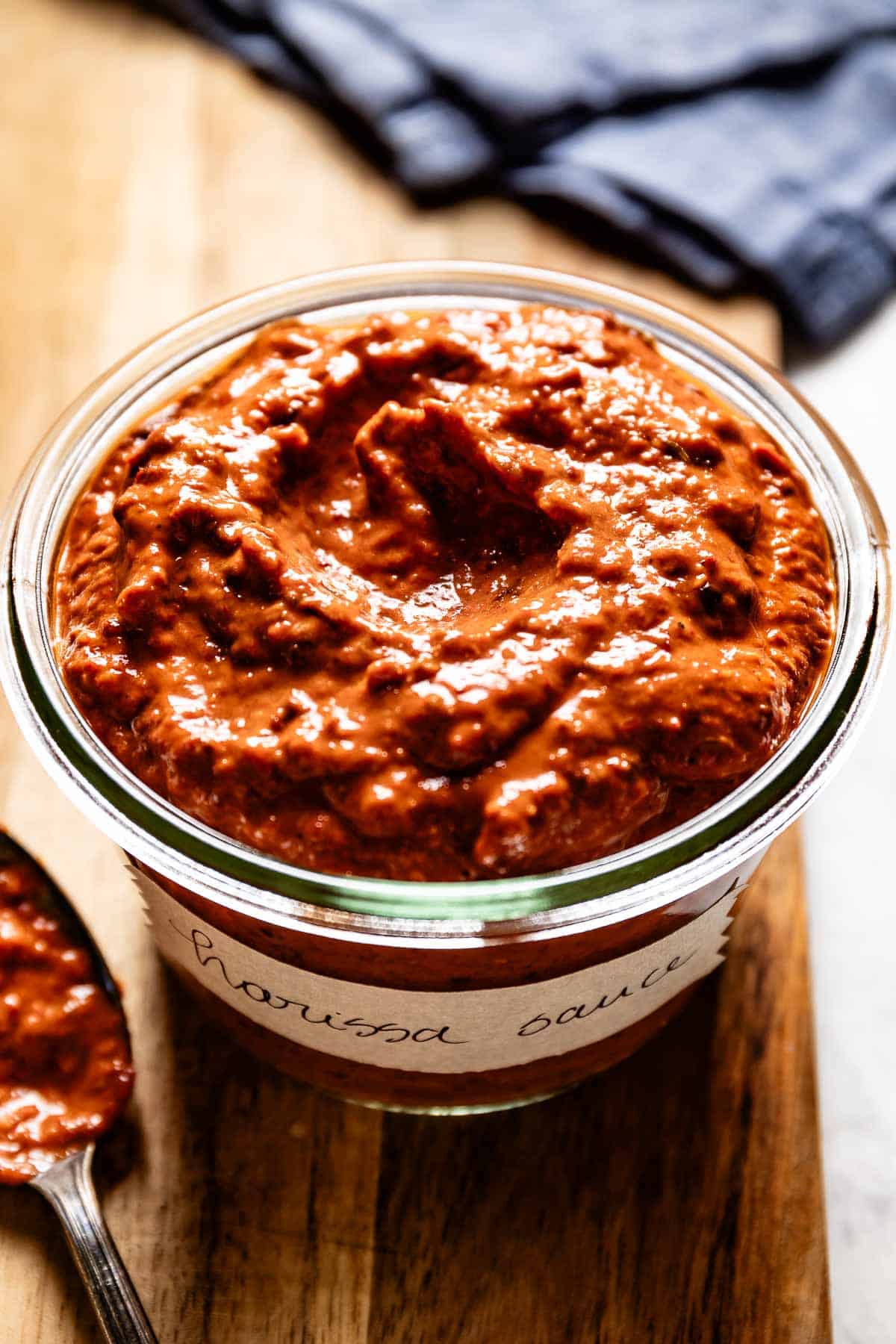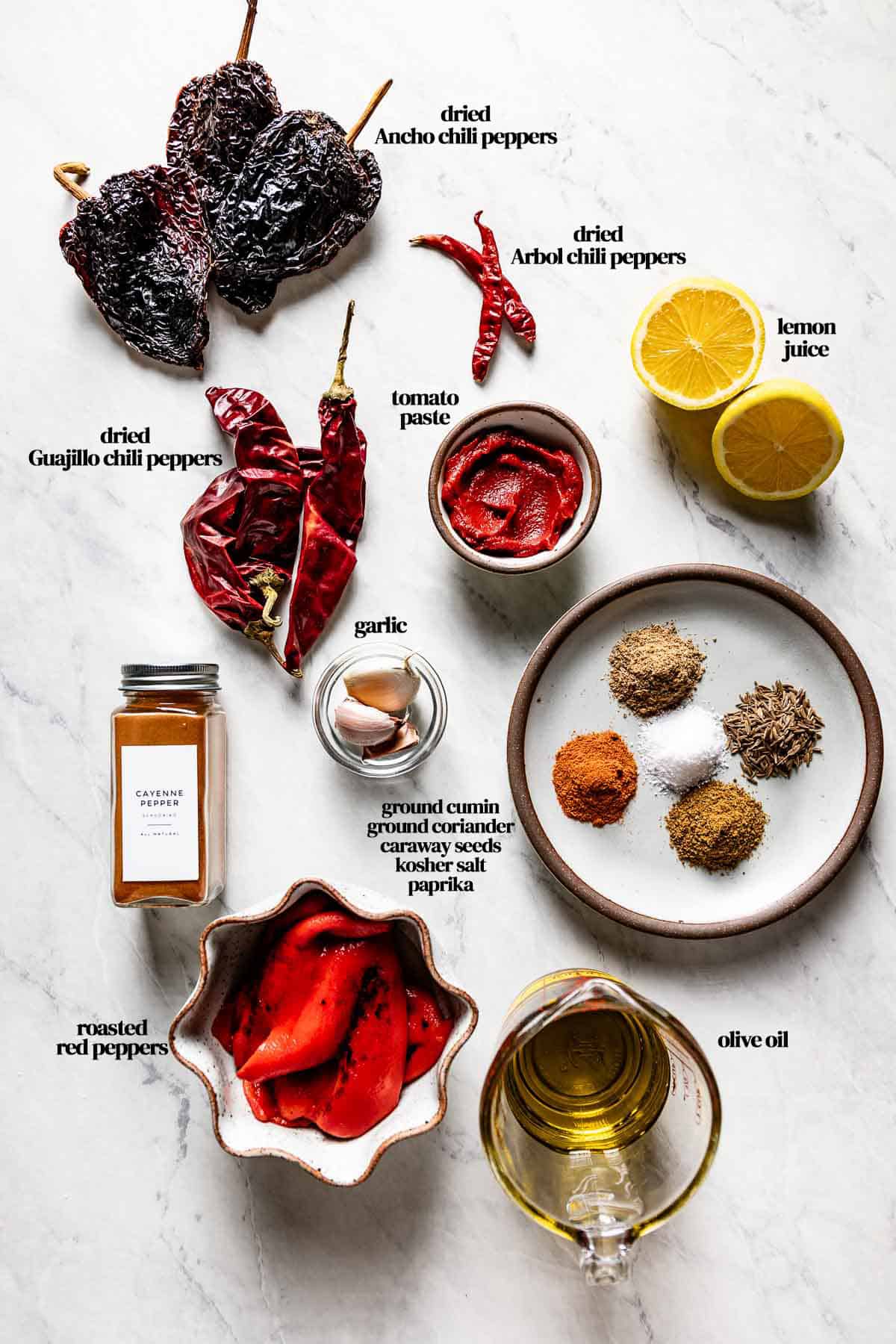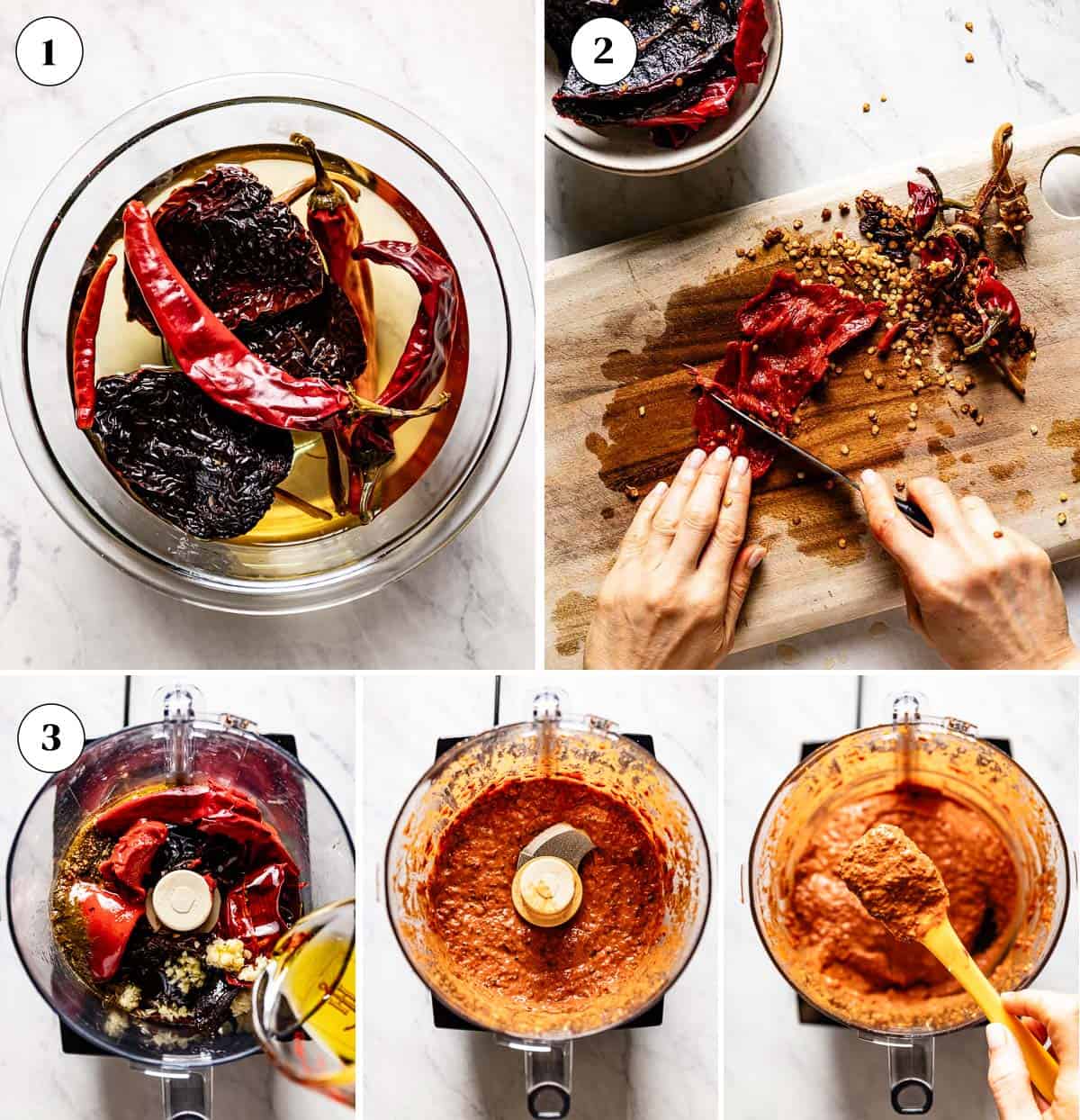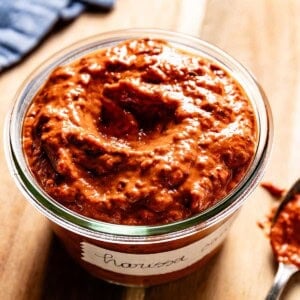Harissa recipes are essential to any spice-lover’s cookbook. If you’re in the mood for a succulent poultry main, my Grilled Harissa Chicken and Harissa Honey Chicken offer a brilliant flavor that will enrich any weekday dinner.
What is Harissa?
Harissa is a smooth, spicy condiment that originated in Tunisia. Sometimes referred to as “Tunisian ketchup” or “harissa paste,” this bold, red sauce includes a basic mixture of dried chilis, warm spices, tomato paste, garlic, olive oil, and lemon juice. This mix results in a delicious blend of hot, smoky, and mildly tangy flavors. Since its creation, harissa has spread to neighboring countries, like Morocco, Jordan, and Algeria, and it’s now a staple in North African and Middle Eastern cuisine.
Dried chilies: I prefer using a mix of guajillo, ancho, and de arbol chilies in this recipe due to their balanced mix of heat and complexity. However, if you’re looking to make a spicy harissa recipe, you can incorporate Mexico chilies that fall higher on the Scoville Scale, or you can make a sweeter harissa sauce by using more New Mexico chilies (a milder variant). For the best harissa, I recommend using 7-8 dried peppers of different kinds. You should be able to find dried chilies at your local grocery store, or you can purchase them online (affiliate link) if desired. Spices: Cumin, coriander, and caraway seeds are essential to giving this condiment its warm, fragrant heat. I prefer using pre-ground spices in this mixture to save time, but you can also grind an equal amount of whole spices with a spice grinder or mortar and pestle. Roasted red peppers: To make homemade harissa paste, you’ll need two whole roasted red peppers. I usually opt for a jarred version (be sure to drain its juices first!), but you can also make homemade roasted red bell peppers for a fresher, smokier taste. Fresh Garlic cloves Seasonings: I found that a simple mix of kosher salt and Spanish paprika was sufficient to give this African chili paste a savory, bright flavor. Smoked paprika—a version of Spanish paprika—will also work if you prefer a more robust smokiness. If desired, you can also add ¼ teaspoon of cayenne pepper or red pepper flakes to increase the recipe’s heat level. Tomato paste Lemon juice: I always opt for fresh lemon juice, which has the most vibrant, citrusy flavor. Extra Virgin Olive Oil: A mild-tasting extra virgin olive oil such as Costo’s single-origin organic olive oil (affiliate link) would work beautifully in this recipe. Honey (optional): The recipe below does not include honey, but harissa and honey are a wonderful combination that you’ll find in many recipes. If you prefer a sweet harissa, I recommend adding two tablespoons of honey, giving it a taste, and increasing it based on your preference.
How to Make Harissa Sauce?
It’s easy to make harissa paste worthy of a North African restaurant in your own kitchen. With my easy step-by-step instructions, you can prepare this condiment in under an hour.
Storage: To store your harissa sauce, transfer it to an airtight container or jar and store it in the refrigerator for 2-3 weeks. I also recommend pouring a thin layer of olive oil over the top of the sauce before storage to prolong its shelf life, as this layer will help limit exposure to oxygen and bacteria. Freezing: This red harissa recipe can be frozen for up to one month in an airtight, freezer-safe container. For easier portion sizes, pour your sauce into an ice cube tray, freeze until solid, and then transfer the individual cubes into a Ziplock bag. Thawing: To thaw frozen harissa, place it in the fridge overnight or until ready to use.
Aysegul’s Expert Tips
The best way to make homemade harissa is to use these chef-approved pointers. With tips on flavoring, safety, and consistency, this guide will ensure that even beginners can easily make harissa paste.
Marinade: I highly recommend adding this harissa sauce to marinade recipes if you love spicy foods. Try adding a tablespoon (or two) of harissa to my Yogurt Chicken Marinade and Shrimp Marinade to introduce a vibrant heat and depth of flavor that will make your dishes stand out. Also, honey and harissa make a delicious marinade that can be used for chicken or salmon. Want to give it a try? Make my harissa honey chicken and use it in my Copycat CAVA bowls recipe! Soups and stews: Want to add extra complexity and spice to a basic soup recipe? Try using this spicy sauce in place of tomato or chili paste! In particular, I love adding harissa to hearty, full-bodied dishes like Quinoa Stew, Vegan Chili, and Beef Stew. Pasta sauce: If you want to add sumptuous heat to your pasta, harissa is just the thing. For a spicy kick, stir a quarter cup of this condiment into your favorite tomato-based pasta sauce. Spread for sandwiches, pizza, and flatbread: I love using this simple recipe as a harissa spread for easy weekday lunches, like sandwiches and flatbreads. You can even spread it over avocado toast for a delectable balance of rich, piquant flavors. Dip: Add a spoonful of this Mediterranean chili sauce to plain Greek yogurt, and you can spice up any dipping sauce in no time. You can even mix it with Hummus for a creamy, hot classic no one can resist. You can also make it a part of your next mezze platter by serving it with other Middle Eastern dips like my Babaganoush and Muhammara recipe. Roasting vegetables: Because it’s such a flavorful, smooth sauce, hot chili pepper paste is an excellent condiment to drizzle over roasted veggies. I especially love pouring it over a hearty plate of Roasted Butternut Squash or Roasted Eggplant for an extra-bold side. Salad Dressing: This harissa hot sauce recipe is a flavorful condiment and a fantastic base for salad dressings. With a few simple ingredients, you can even make a tangy yet hot Harissa Vinaigrette. Grains: Tired of bland grains? You can give a little kick of spice to everything from rice to bulgur to quinoa to couscous when you add harissa to your mix.
Experiment with different types of dried peppers: Red chili peppers have a wide range in spice levels, with some (especially Mexico chilies) having greater amounts of heat and others (like New Mexico chiles) boasting a milder profile. Therefore, I encourage you to experiment with the blend of chilies to achieve your ideal level of spice. Wear gloves (or wash your hands well): When making this spicy condiment, you must protect yourself from the chilies’ spicy compound, capsaicin. Though flavorful, capsaicin often clings to the skin and can cause a burning sensation when exposed to eyes, airways, and cuts. Wearing gloves is a good idea when working with chili peppers or—if you don’t have any gloves—wash your hands thoroughly afterward. Toast spices: As I mentioned earlier, I used ground spices to save time. However, you can use whole spices and grind them yourself. If you decide to do so, I recommend toasting them in a cast iron skillet for 3-5 minutes before grinding them in a spice grinder or with a mortar and pestle. Consistency and texture: In its original Tunisian form, harissa has a smooth, condiment-like consistency. However, harissa has since taken on other commercialized forms, like “harissa sauce” (which purportedly has a thinner, sauce-like texture) and “harissa paste” (which is supposed to be thicker and less liquidy). Though these terms technically refer to the same thing, you can still adjust this recipe’s consistency using more or less olive oil, depending on your desired thickness. During our recipe testing, we compared our homemade version to commercial brands (like Trader Joe’s Harissa, NY Shuk, and Mina ) and thought ⅓ to ½ cup of olive oil was a good place to start. Taste for seasoning: As with any recipe, it’s important to taste your sauce before serving and adjust the seasoning as needed. If your recipe already includes salt, be mindful of this when adding harissa sauce. You may need to reduce the amount of salt in your harissa to prevent over-seasoning your final dish. Gets better the next day: Letting your DIY harissa sauce sit in the fridge overnight is an easy way to let its flavors develop and mix, leading to a much tastier, more robust recipe.
If you make this Harissa Sauce recipe, I would greatly appreciate it if you could take a minute to rate it and leave a comment below. It is a great way to support this website and help those planning to make it. Also, if you took pictures, I’d love to see them. Share your creations on Instagram using #foolproofeats so I can share them with the Foolproof Living community. This Recipe is:





